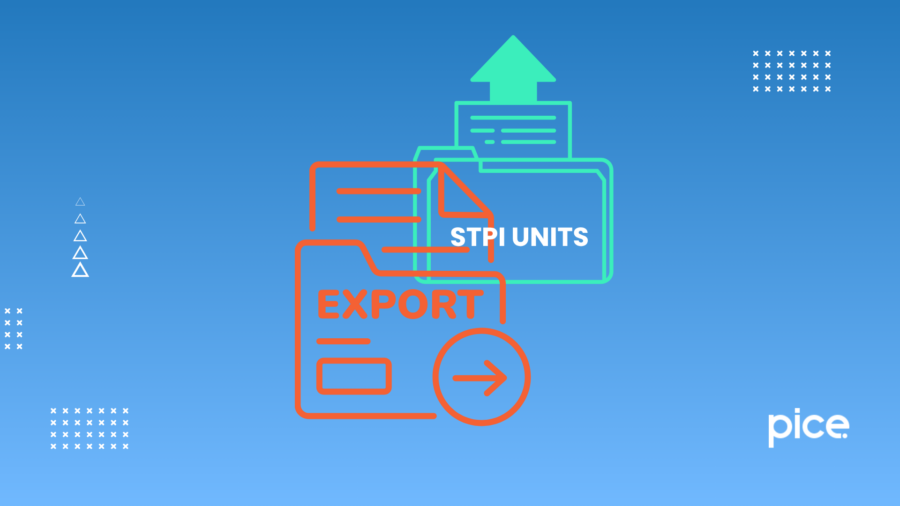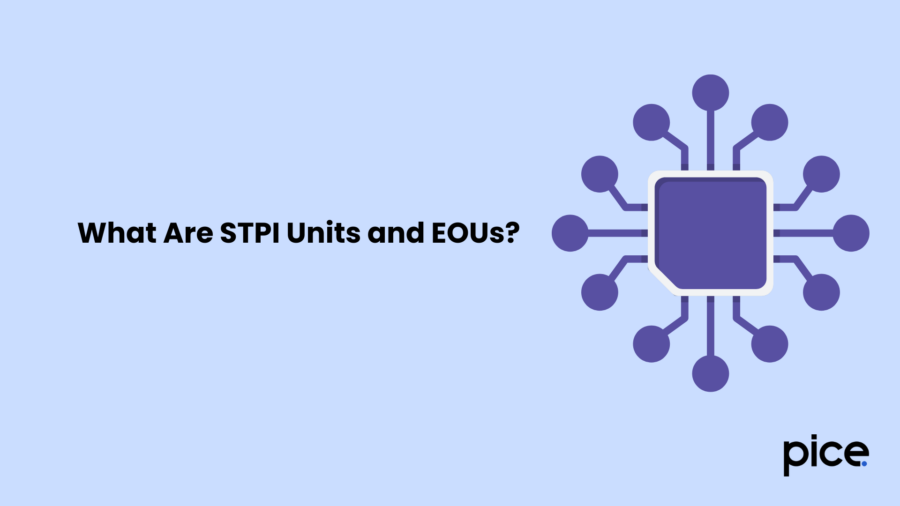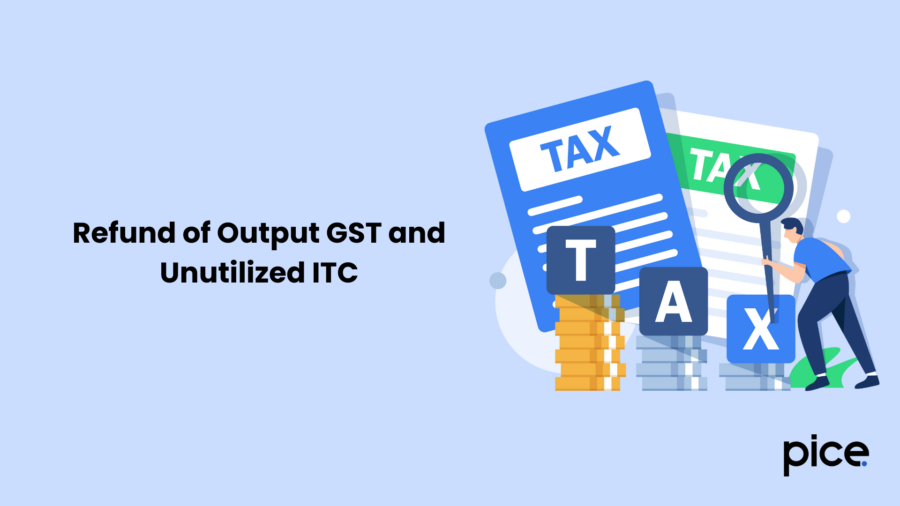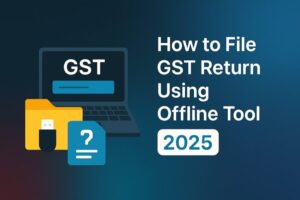Know Impact of GST on STPI Units and Export-Oriented Units (EOUs)
- 25 Jun 25
- 9 mins

Know Impact of GST on STPI Units and Export-Oriented Units (EOUs)
- What Are STPI Units and EOUs?
- Meaning of Export-Oriented Units (EOUs)
- GST and Its Key Provisions for Exporters
- Input Services and Input Tax Credit (ITC)
- Refund of Output GST and Unutilized ITC
- Categories of Refund Utility
- Filing Refund Applications: Step-by-Step Guide
- Rule 96(10): A Stumbling Block
- GST Refund Challenges for STPI Units
- GST on Export Transactions: Documentation and Compliance
- Impact on Software Companies and Export Commitments
- Recommendations for Software Exporters
- Conclusion
Key Takeaways
- Zero-rated supply provisions under GST enable STPI and EOU exporters to claim refunds and remain tax neutral.
- Exporters can file GST refund claims via LUT/bond or by paying IGST and subsequently claiming output tax refunds.
- Rule 96(10) restricts IGST refunds if exemptions on capital imports or input services are availed under specific schemes.
- Documentation accuracy, timely filing of returns, and compliance with forms like GST RFD-01 and SOFTEX are critical for smooth refunds.
- Challenges like refund delays, lack of software export certification, and refund eligibility ambiguity necessitate expert GST guidance.
While GST brought standardisation and uniformity, certain niche sectors like Software Technology Parks of India (STPI) units and Export-Oriented Units (EOUs) experienced significant changes in their operational and compliance landscapes.
These units, which are primarily engaged in the export of software services and goods, need to understand the implications of GST laws, especially concerning input services, refund mechanisms, customs duty exemptions, and export transaction documentation.
In this detailed guide, we will explore the impact of GST on STPI units and EOUs, the challenges they face, and how they can leverage various provisions, such as zero-rated supplies, to optimize their export performance and business continuity.
What Are STPI Units and EOUs?

STPI is a government initiative under the Ministry of Electronics and Information Technology (MeitY), established in 1991 to promote the growth of software exports. STPI units play a major role in stimulating the software economy within India and provide about nearly 50% of national software exports, thus adding to national GDP.
These exporters actually export software services, software products, and IT-enabled solutions. STPI also works as the regulatory authority to monitor and supervise the operations of registered software companies regarding their export commitments and the realization of export proceeds.
Meaning of Export-Oriented Units (EOUs)
Export-Oriented Units are business entities that are permitted to produce and export 100% of their products or services. EOUs operate under the Foreign Trade Policy (FTP) and enjoy various benefits, including exemption from customs duties, duty-free procurement of capital goods, and simplified procedures for exports.
The EOU scheme aims to:
- Increase foreign exchange earnings.
- Promote export of capital goods and software.
- Encourage employment generation.
- Offer cost benefits through exemptions from additional duty and excise duty.
When STPI units operate as EOUs, they get access to various tax advantages, which now intersect with GST regulations.
GST and Its Key Provisions for Exporters
In the place of GST introduction, zero-rated supply turned out to be in the core of the export taxation. Under section 16 of IGST Act, zero-rated supplies are covered within the:
- Export of goods and services
- Supplies to Special Economic Zones (SEZs)
This enables an exporter to make outward supplies without any tax liability and, therefore, to claim refund of taxes paid on input services, raw materials, and capital goods. Thus, the export of software service, export of software, and export by STPI and EOU units are tax neutral.
The two ways of getting refund claims are:
- Export under bond or Letter of Undertaking (LUT) without payment of tax and claim refund of unutilised Input Tax Credit (ITC).
- Export on payment of IGST and claim refund of output GST paid.
Input Services and Input Tax Credit (ITC)
Operating through STPI units and EOUs, use a number of services or capital inputs in their functioning, such as software licenses, internet infrastructure, consulting services, etc. Under GST, ITC is available on such input services to the extent they are used for making taxable or zero-rated outward supplies. Compliance from GSTR-3B and Form GSTR-1 are the required forms to claim and report their exports for ITC purposes. Accurate reporting would allow a seamless refund process.
Refund of Output GST and Unutilized ITC

Under Section 54(3) of the CGST Act, exporters can get refunds for goods or services supplied under LUT without payment of tax. Refund of output GST is a huge incentive for software companies and exporters under STPI or EOU schemes.
Key points to consider:
- Filing of application for refund in Form GST RFD-01.
- Refund is limited to only the export income and its last export performance.
- Exporters are required to furnish declarations and proof of export as prescribed to the concerned tax authorities.
Under Rule 89(4) of CGST Rules, refund amount is calculated using the formula:
Refund = (Turnover of zero-rated supply of goods + Turnover of zero-rated supply of services) × Net ITC ÷ Adjusted Total Turnover
Categories of Refund Utility
Refunds can be categorized into:
- Refund of unutilized ITC.
- Refund of taxes paid on export of goods/services.
- Refund of IGST paid.
- Refund of additional duty, excise duty exemptions, or customs duty exemptions availed.
Filing Refund Applications: Step-by-Step Guide
You need to follow this step-by-step guide to file refund application:
Step 1: Prepare export documentation
Include export invoices, shipping bills, and realization of export proceeds from banks.
Step 2: File refund application
Application in Form GST RFD-01 is submitted electronically along with supporting documents.
Step 3: Furnish declarations
Include Form Annexure-III and Annexure-IV, if required.
Step 4: Verification by authorities
The respective authorities will assess the refund claim for eligibility.
Step 5: Refund disbursal
If approved, refund is credited directly to the bank account of the refund applicant.
The status of the refund application can be tracked on the GST portal.
Rule 96(10): A Stumbling Block
A critical clause impacting STPI units and EOUs is Rule 96(10) of the CGST Rules. This rule denies refund of IGST on exports if:
- The exporter has availed exemptions on imported goods or services under certain notifications (e.g., duty exemption schemes).
- They have benefited from duty-free procurement or concessional imports.
This rule has led to confusion regarding eligibility for refunds, especially for merchant export suppliers, who often use multiple schemes to reduce export costs.
GST Refund Challenges for STPI Units
Following are some challenges related to GST refunds on STPI units:
1. Absence of Certification
The absence of certification for software exports creates hurdles in verifying export of services. Exporters often face delays in getting digital form approvals from authorities.
2. Ambiguity in Refund Eligibility
There’s ongoing ambiguity around refund eligibility for EOUs that avail capital goods duty benefits under customs schemes. This affects the claim for refund and may lead to disallowance of otherwise eligible refund amounts.
3. Delayed Processing
While the GST portal has provisions to file refunds online, exporters report delays in receiving the benefit of refund, sometimes beyond the stipulated refund claim period.
GST on Export Transactions: Documentation and Compliance

For a smooth entire process of refund and compliance, exporters must ensure:
- Proper classification of goods/services.
- Timely filing of returns.
- Maintenance of records for at least 6 years from the end of relevant tax periods.
- Submission of documents to governmental authorities.
Forms for software export, including STPI’s SOFTEX Forms, should also align with GST reporting requirements.
Impact on Software Companies and Export Commitments
The GST regime’s increased compliance has made it essential for software projects to integrate taxation strategy from the start. Key impacts include:
- Increased cost of compliance due to e-invoicing and documentation.
- Improved refund process efficiency with the introduction of real-time validations.
- Enhanced monitoring by authority for monitoring STPI exports.
Recommendations for Software Exporters
To navigate GST complexities:
- Consult with GST professionals familiar with software exports.
- Avoid overlapping benefits like IGST refund and duty benefits simultaneously.
- Keep communication open with the administrative authority (STPI/Development Commissioner).
- Use the latest digital forms for filing and track the details of refund claims online.
Conclusion
Understanding the impact of GST on STPI units and EOUs is crucial for software exporters aiming to maintain profitability and compliance. By leveraging zero-rated supplies, carefully evaluating refund eligibility, and adhering to prescribed procedures, software exporters can continue to thrive in a globally competitive environment.
Whether it is export at custom ports, or filing of export declaration, businesses must focus on timely documentation, use of prescribed forms, and managing costs with duty to maximize tax benefits.
The Application for refund can be a seamless process when businesses follow due diligence and remain updated with policy changes from the GST Council and respective ministries.
💡If you want to streamline your invoices and make payments via credit or debit card or UPI, consider using the PICE App. Explore the PICE App today and take your business to new heights.
 By
By 

















